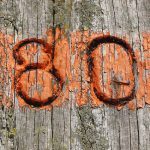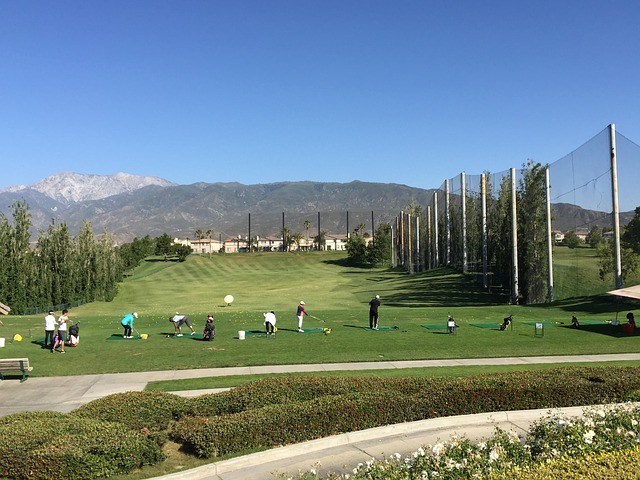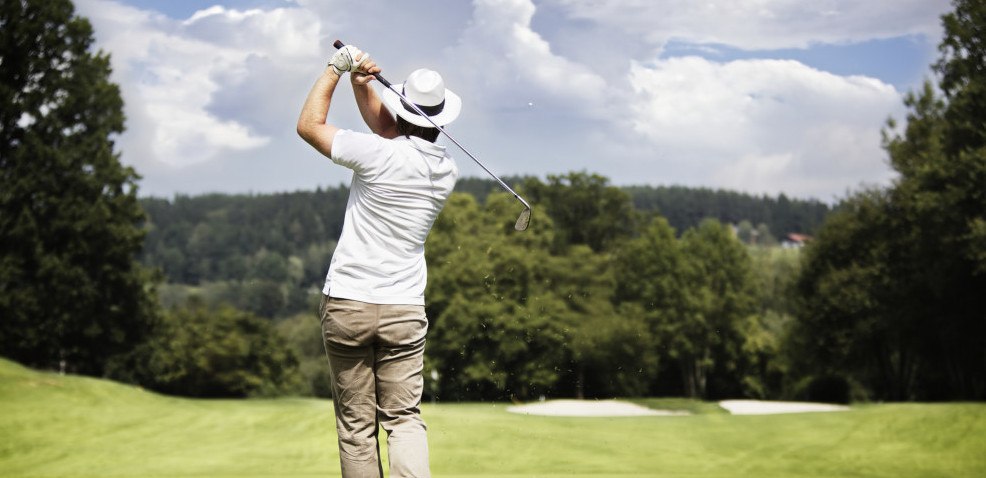It is a well-known fact that the vast majority of internet golfers regularly shoot under par from the tips, need xx-stiff shafts in all their clubs (including the putter!) and are just keeping their game sharp until they get a shot on tour. However, in the real world, this isn’t the case. An oft-cited statistic says that most people who golf won’t break 100, never mind breaking 80. This is probably true if we include those who pick up their clubs once a year at most on a golf day at work. For those of us who play regularly or semi-regularly, we can fix our sites a little higher.
The Ultimate Guide to Breaking 80
One barrier which is something that many golfers aim for is to break 80. I am firmly in this club. I have broken 80 before, but to date my best round in competition is 80. Whilst this makes me a reasonable golfer compared to the majority, it also makes me far from exceptionally talented. Although I dream of breaking par one day, I simply don’t have the time or talent for that to be in my immediate future. Maybe one day though!
[toc]
Breaking 80 is certainly on the cards though. After all, as an 11 handicapper as I type this, I am pretty close, aren’t I? As a golf addict, I began to wonder what it would take to shave a few shots off my game and start scoring in the 70s.
How Can we Save Shots?

The more I looked int this, the more it seems that scoring 79 (or less) is actually a pretty reasonable aim for a lot of us. Once again, apologies to the internet pros out there who are regularly posting scores in the 60s and hesitating between a smooth 9 and a hard pitching wedge from 170 yards (why have I never seen this guy on the course? Or even on tv!) for the rest of us average Joes, here is the ultimate guide to ducking under 80.
First of all, let’s be clear what we mean here. For me, I want to get this score in either a competitive or serious round. By serious, I mean no improved lies, no mulligans, no gimmes from 6 feet. It doesn’t have to be in a competition if you don’t go in for that, but we all know the difference between a 79 and a 79 that was really an 85, right?
Secondly, this should happen on an appropriate course, in terms of length and difficulty. If you are looking to break 80 on the local pitch and putt, par 54, this isn’t really for you, even though some parts will be useful. Likewise, if you are aiming for a 79 on Bethpage Black in tournament conditions from the back of the back tees, you are a scratch golfer already-well done you!
I have divided this article into all the areas that seem to me to be important. That means covering all the bases from practice to what happens on the course. There is a helpful table of contents above to navigate from section to section. There is also a great list of resources at the bottom where you can find more information about each part if you want. Ready to break 80? Let’s go.
How to Spend Your Practice Time
The easy answer to this would be to spend more time practicing. The problem here is simply that for most of us, this isn’t an option. We have jobs and families. So how do we get more out of our limited practice time? what are the key areas to improve? Actually, you might be surprised at what you need to do to make a dent in those scores.
Common belief would say that putting is key. After all, probably 40 percent of our shots are going to be on the greens, right? There is certainly some truth in this and we will come back to how to practice putting in more detail, but it is worth stepping back and having a think about how your score really comes together.
Is Putting Really so Important?
If you score 80 and two putt everything, you will hit 36 putts. If you score 90 and 2 putt, you will also hit 36 putts. Simply, you are taking more shots tee to green. Now without a doubt, we should all be working to reduce the number of putts we take and get rid of those dreaded 3 (or more) jacks. But this isn’t simply dependent on the quality of your putting. If you are getting your shots closer to the hole, you will take fewer putts. If you hit every green in regulation, you can take 40 putts and still break 80 comfortably. so while putting is going to be an important part of the plan, it isn’t just a case of “putt better.”
Greens in Regulation: Useless for the Average Golfer
So it must be hitting more greens then? Just need to work on getting that crisp iron striking going and that will do it! Actually, this is really the least important part of the game. Not unimportant by any means, but not the key. As an example, I am a always buying golf equipment. I currently have 4 sets of irons starring at me from various corners of the room and these vary from the most butter knife of blades to the friendliest of shovels. Guess what? They make very little (not none, but little) difference to my scores.
You can probably see where I am going with this. The two areas that will make the biggest difference to score are the tee shot and shots around the green. Simply put, anyone who hits every fairway at a reasonable distance and gets up and down will score well.
This shouldn’t come as a surprise. Look at your scores. I will bet that the best of them didn’t come because you hit a load more green in regulation. As an 11 handicapper, I usually hit from 3-8 greens. My best scores are when I stayed out of trouble off the tee and the short game seemed to be working. I have had days when I really felt that I was striking my irons great but they didn’t lead to fantastic scores simply because I hit a couple out of bounds or managed to do the famous chip, putt, putt (putt…) once too often.
What should You Practice Most?
So how do you practice this? Jumping on the range and pounding drivers isn’t the key. What we all need is a repeatable tee shot that goes where we want. There are of course two schools of thought about this. The bomb and gauge crew are going to advocate smashing it as hard as possible and then dealing with the result because a wedge from the rough is better than a mid-iron from the fairway.
The research actually shows that there is no difference at all in terms of proximity to the flag or score, but there is actually a better reason for most of us to shy away from this method. It is how many scratch golfers and pga pros play the game and it works for them for one main reason: a miss from a professional golfer doesn’t mean slicing it out of bounds into the yard of the house next door!
The difference Between You and the Pros
When Jason Day rips it down there, there is a good chance he will find the short grass. Even if he doesn’t, he won’t be missing it by 70 yards very often. If I try to rip my driver as hard as possible off every tee, I guarantee that I am playing three off the tee at least three times a round. That is six extra shots on my card and any chance of a round in the 70s gone.
So the first practice key is going to be to develop a repeatable shot off the tee. This needs to be long enough for the tees you play. Most golfers of a certain level (at least those who are looking at this sort of score) can hit the fairway with a seven iron. But that is going to make it tough to hit greens and put a lot of pressure on the short game. So what we need is the longest club we can control and have a shot that has a good chance of finishing on the fairway.
Driver: the Amateur’s best Friend
A few years ago, three wood might have been the suggestion, but as we will see the in equipment section after, driver is probably the best bet for most of us (as long as you follow the suggestions below for choosing this driver.)
So the first key for practice is to know you shot and know your miss. For a lot of us, the safest, easiest driver shot is a controlled fade. This shape has a lot going for it. I don’t mean that high-handicapper slice: think more a Nicklaus power fade. If your shape is straight, or a draw, that works fine too, but out of choice, working with a pro to develop this fade could pay dividends.
I like to think of this as a 90% shot. For example, I might fly my driver 250 yards. Here, I want it to go maybe 225-230. With roll, the aim is to find myself either on the fairway or in the first cut virtually every time at 240+ yards. Unless I am playing an absolute monster, the makes the green reachable without hitting a three wood off the deck or something else high-risk.
Visualize on the Range
Start by working on this on the range. Ideally, you want to have a precise distance on a target and know how this relates to your full-on, “smash it and hope” distance. The next thing is to have a precise target. don’t just knock it down the range, take your time with each shot and relate it to the course.

For example, there is a tree about 200 yards down range where I usually practice. I visualize this as being the left-hand edge of the fairway (the first fairway happens to have trees all down the left side, so this works perfectly). I then aim just on the right edge of this tree and attempt to hit a 15 yard or so fade off it. There is another tree behind the fence at the end which is about 40 yards to the right of the first tree and I see this as being the right edge.
Having this exact shot and these visual cues is really useful. It corresponds to my first shot on that course. As I mentality play my round, I will change these cues depending on what is on that particular hole. So how is this better than what I used to do?
Be Honest With Your Practice
Before, I could kid myself that I was hitting driver well quite easily. The ball would shoot off down the range and the contact felt solid. Sure, that one was a little bit left, but it looked like a lovely flight. and that one was off to the right, but still on the range, so that’s fine isn’t it?
Actually, no it isn’t as we all know. Now, I know if my shot is on the fairway or not. As I get better, dispersion tightens up. I start the ball on the tree’s right side. If it doesn’t fade, I would be on the left edge of the fairway. Not great, but not three off the tee by any means. A good shot will be twenty yards right of this. and if the fade turns into a slice, I am on the right edge but this is definitely the best side to miss on the course.
It is easy to get into a rhythm doing this and when I hit twenty or more drivers, results tend to be quite good. however, on the course, we don’t hit one driver after another. Effective practice should be as close as possible to game situations. Once you can control this shot and it is landing most of the time where your virtual fairway is on the range, you need to mix things up.
Play the Course on the Range
I like to do this by playing the course in my head. Hole one would be driver then a five iron usually, so I will hit these two clubs. On the next tee, a par five, the fairway is wide and I want to be on the right hand side and definitely not left. So I aim dead centre and let it drift right. In my head I will pick out points on the range that represent the sides of the fairway.
This sort of conscious, deliberate practice is the way to develop a consistent, repeatable fairway finder and takes care of the first step in practicing to beat our 80 barrier.
Forget About the Second Shot
Although the second shot is often cited as being the most important in golf, for us we aren’t going to worry about it too much. Sure, most of the time it is the shot into the green, but in reality you will be missing the green more often than not. In the on course management section below, we’ll talk about how to deal with this shot, but it isn’t where you want to be dedicating the majority of your practice if better scores are the priority.
So this brings us to the second area that we need to work on which is short game. Now, I do like to think of myself as Phil Mickelson round the green, but the reality is that for every flop shot that works out as I planned, there are probably five that are skulled across the green and past that group on the next tee while I try to look innocent!
This short game needs work and it really is an area where smart practice pays off. The result of our second (or third on the par fives probably) is generally going to be someone around the green if we have been working on the tee shot and are actually hitting it from the fairway. Once in a blue moon, it will actually leave the ball somewhere near the flag and we will inevitably miss the birdie opportunity in a fit of nerves, but probably tap in for an easy par.
Speed: the Key to Lag Putting
The rest of the time, we are either going to have a long lag put to deal with or some sort of short game shot. I wrote a whole article on how to practice your putting here but generally, on these long lag putts, it makes sense to practice speed rather than direction. If you pick more or less the right line, a decent weight will leave the putt withing three feet or so, which is fine if we are working hard on holing out.
This is why the two key putts to practice are the very long lag putts and the 3-4 footers. Making 6-10 footers are nice, but generally these are necessary when you are trying to capitalize on a birdie chance so something of a bonus, or trying to make up for a poor first putt or chip. why not just work on getting that putting or chipping better and cut down the number of mid-length “must make” putts you have in a round?
For the chips and pitches when your approach shot misses (as it will most of the time,) be really careful how you practice. Most short game areas have a lovely, smooth strip of pr-green and we tend to get pretty good at chipping from there. And then on the course we find ourselves in a range of completely different situations and it all falls apart.

So the key here then is to practice game situations. One good idea is to take 18 balls and drop (not place) the around the green in various lies, including sand and think rough. The aim is then to get up and down as many times as possible from these 18 balls by chipping and then putting. You will quickly realize that it isn’t the putting that makes the difference, it is getting that chip within gimme range.
We’ll talk about the choice of clubs and shots in the course management section, but practice with various clubs and find options that you can play repeatedly with the minimum amount of very poor shots.
Basing your practice time around developing a repeatable fairway-finding tee shot, better chipping and lag putting and then holing out from shot range is, in my opinion, the best way to spend your range time when aiming to break 80 (or 90, for that matter.) So once you have got this nailed, the next step is to think about what is actually in your bag. surely all that game improvement technology can shave a few shots, can’t it?
Equipment:How Much Difference Does it Really Make?
Actually, smart equipment choices are important, but the clubs in your bag are certainly less important than other things that are considered equipment. which is ironic when you consider the advertising budget that the big manufacturers spend on promoting their latest and greatest.
Can you Buy A Better Game?
As someone who spends more than he should on clubs, I am not saying that they can’t make a difference or that modern clubs aren’t any good. This is far from the case. However, it really is a relatively small difference compared to other things. For example, let’s take irons. Imagine you buy the latest game improvement clubs designed to go further and straighter than ever before. On my home course, once I take away driver, woods, hybrids, wedges and putts, I’m left with abut 15 iron shots a round. Let’s be generous and say that friendlier irons save me a shot or two (although actually, they don’t.) The margins are relatively small compared to getting up and down more often (3-4 shots), hitting fairways (3-4 shots at least), and better lag putting (2 shots or more) Not worthless, but given the cost of clubs, not where I would put my money.
A Genuine Equipment Advantage

There are exceptions. I really like the concept of single length irons and have a set myself. I think they could both make the game easier than standard progressive sets and also make this part of the game more consistent with less practice which frees up range time for working on other things that do make a difference.
Technology in other areas can certainly help. Despite a recent study showing that driving distance hasn’t really changed over the last decade, 460cc drivers are easier to hit than drivers from a decade or more ago. However, if you are playing something from the last couple of years, you really aren’t losing out that much. The key is to pick something that you can actually hit.
Shorten Your Driver Shaft
Unfortunately, companies are making driver shafts longer and longer and trying to hit the middle of the face with a 46 inch driver is mission impossible for many. If you can get something that is maybe 44 inches or so, anyone with a fairly repeatable swing is going to be fine as long as you aren’t swinging out of your socks every time and you work on grooving that tee shot as explained above.
Replace your Long Irons
Likewise, it really isn’t worth keeping those longer irons in the bag. There is a range of friendly driving irons and hybrids to replace 3,4 and 5 irons (and more) This just makes it easier to hit the ball solidly.
so if clubs aren’t the best example of technology to improve scores, what is? Well, I would argue for on course distance devices like range finders and GPS and practice aids like shot trackers and even swing analysis kits.
The Best Equipment Bang for Your Buck
There is a good chance that you already use some sort of distance finding device. Whether you choose a GPS or a laser depends on various things and both are good as I explained here. The reason why these can really shave shots is because you can find exact distances and know how far you really hit each club. For example, there is no excuse today for saying that your seven iron goes “about 160” Especially if it really goes 145. Measuring your shots over a variety of conditions takes the guess work out of things and is going to help you hit more greens than changing irons, for example. There is nothing worse than puring one only to see it fall 10 yards short into the water simply because you didn’t know just how far it was. You might still hit it in the water on a bad shot, but it won’t be because you didn’t know your distance.
It also makes it easy to plot your way around the course and this is part of any sound course management strategy as e’ll see later on in the next section.
Analyzing your Swing for Fast Improvement
Home swing analysers like the Zepp have made it possible to understand your golf swing at home without paying for lessons all the time too. It is fantastic knowing just how you are striking the ball and how far it is going. It makes it much simpler to work on faults and ingrain a solid, consistent swing.
Getting something like a laser rangefinder is actually far cheaper than a new set of irons or this year’s driver and to my mind, money far better spent.
On the Course: Planning an Course Management
So once your bag is set, new rangefinder in hand and practice routine starting to pay off, it is time to hit the course. This is the third part of the push for 80-just how are you going to deal with the pressures and problems on the course?
Making a Plan Before you Start
Actually, good management starts before even planting that tee peg on the first. Making a plan is a smart way to tackle any serious round. You might not think this is so important, especially if you play the same course all the time. You know the holes, the layout, the way the wind blows and the slope of the green. But there is more to it than this. For example, do you know where you are aiming for off each tee? which side is the best to miss? Are there any greens that you really don’t want to aim for at all?

This last usually confuses people. After all, if you want to shoot lower scores, surely you should be trying to hit as many greens in regulation as possible, right? Sometimes, playing for bogey is the smart move. After all, even a 79 is going to have 6-7 bogeys in there and quite possibly more. What it won’t have is many (or perhaps any) doubles or triples. Sometimes, playing for a safe bogey is the best choice.
Don’t Always Play for Par
I have an example of this type of hole on my home course. The stroke index one is a 400 yard par four. The tee shot is uphill and the second is downhill to a small green over water. Out of bounds is left and long, water is short and right. The tee shot gets very tight at driver length with real trouble both sides. The green is also very sloped and a long first putt means that 3 putts is hard to avoid.
Now in an ideal world, I hit a controlled draw with my driver which leaves me a seven iron or so into the green. The reality is that I can’t hit a controlled draw and I stand a good chance of getting in trouble and having to chip out. And even if I do, my seven iron will be off a side hill lie and that green is going to look tiny!
However, there is a nice big plateau to aim for if I hit 3 wood and even wider if I hit a hybrid. This leaves me with a long shot into the green, but it also leaves me with the possibility of hitting two easy wedges and then 2 putts. Nothing is guaranteed in golf, but I fancy my chances of a solid bogey here most of the time.So in my plan, I play for bogey here.
The previous hole is a short par four where I will play hybrid, wedge and probably have a putt for birdie and should make par comfortably.
Don’t Abandon a Good Plan
However, I can mess this hole up. What happens if i make bogey or worse here? Out comes the driver and…… 🙂 No, the key is, I stick to my plan. Birdie, par or bogey, it doesn’t matter. I just follow my plan. Given that I will have been working on my short game, I am happy to aim for the safe miss on some greens too because I know that i will get up and down a fair amount of times from this ‘good miss.’
Choose Your Miss on the Second Shot
This brings us back to that second shot I mentioned before. Good golf is about playing the percentages and this is certainly true here. Hopefully by now, you are playing from the short grass more often than not.
Of course, this plan rarely goes according to…..plan! It i one thing to plan your way around the course the night before and record virtual score. This is excellent mental preparation and will help. But what do you do when things don’t follow the script as will happen inevitably? Well, this is in the plan too!
Dealing With the Unexpected
That’s right, you should also decide what happens when you need to deal with the unexpected. One example of this is what do you do when you find yourself in trouble? Do you try the hero shot or take your medicine? The answer should be obvious. If you are looking for a good score, you need to avoid those blow -up holes. Really, bogeys are fine. Playing to a plan means that you stand a good chance of making at least one birdie and should par half the remaining holes too. On a par 72, one birdie and 9 pars along with 8 bogies gives you a seven over 79, for example, so it isn’t as if you need to go pin hunting and try to birdie or even par every hole. In fact, this is the fast track to double and triples which will sink your score faster than anything.
Conclusion
Will this article guarantee you (or me) a round in the 70s this year? Unfortunately not. However, I strongly believe that anyone following this plan who is within a few shots of this type of score should be able to do it. In fact, putting the same tactics in place would be great advice for someone who wants to play bogey gold for the first time and shoot in the eighties. Just remember the three key points:
- Practice smart. Short game up and down, lag putting and a repeatable tee shot are the most important weapons in your armory.
- Equipment doesn’t just mean clubs. Think about investing in a range finder. It will make a difference. If you really want new irons, think outside the box and give single length a try.
- Plan your round and follow your plan regardless. It won’t work every time but it will certainly may off in the long run on more rounds than not.
So what are you waiting for? I would love to hear from anyone who follows this advice and manages to break 80. Or maybe you have a different plan or goal? We would love to hear your story and how you plan to make it happen.
2017 Update:
In the last couple of weeks i have been thinking over the different ways of cutting a few shots from my score when the season finally kicks in. There is probably one more thing that I might add to this list and some of my recent reading tells me that it could be the most important thing of all. Like to guess?
Distance. There, I said it. Hitting the ball further could actually be a key part of scoring better. You might be wondering where this idea came from and the answer is Mark Broadie’s excellent book “Every Shot Counts” without going in to a detailed review of the book, Broadie has a huge amount of statistical analysis from the pga tour to the average hacker that shows that the only real correlation between handicap and score is how far you hit the ball.
I will undoubtedly put up a more detailed review at some point, but suffice to say increasing swing speed and getting a bit more distance is pretty much a guaranteed route to lower score and certainly one of the best ways to improve practice. the book is also an excellent read for anyone who enjoys golf.
A Few Useful Resources
Tom Wishon’s single Length Irons and a study on the single length concept
Reviews of two options for rangefinders, the Nikon coolshot and the Leupold Gx series
How far pros really hit the ball (and other stats from the pga)
Golf digest talks about the study on driving distance increase





